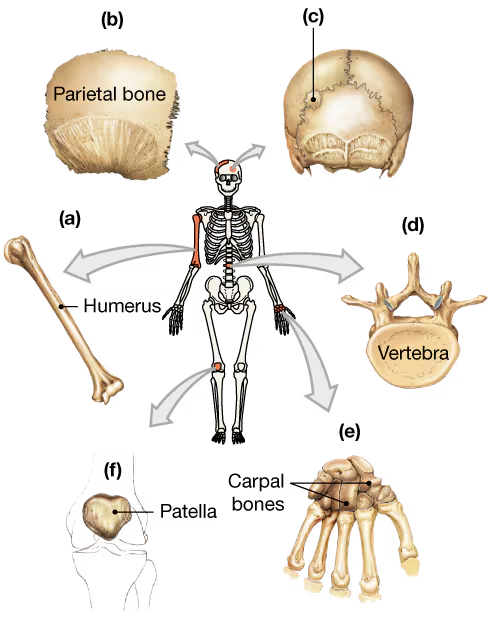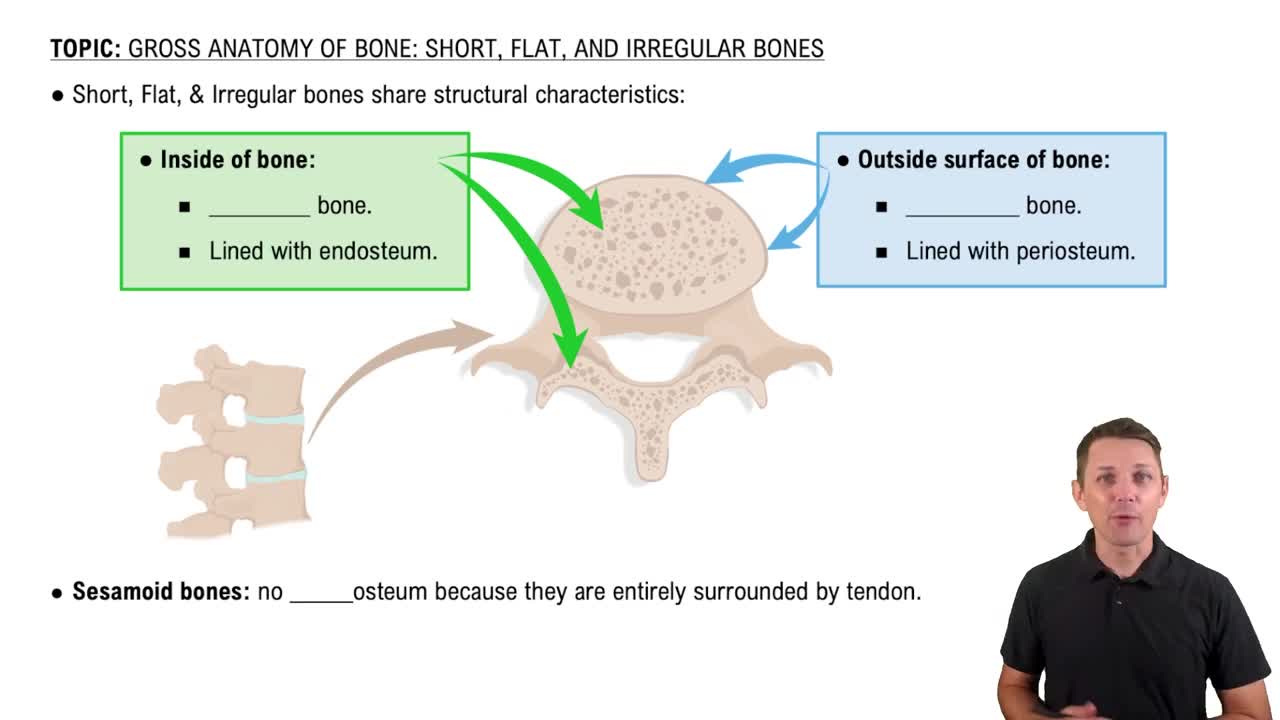Multiple Choice
You are shown an image of a cross section of a bone. You decide it is likely a flat bone based on the structure. Without seeing the overall shape of the bone, how could you tell?
1852
views
39
rank

 Verified step by step guidance
Verified step by step guidance Verified video answer for a similar problem:
Verified video answer for a similar problem:



 2:58m
2:58mMaster Short, Flat, and Irregular Bones with a bite sized video explanation from Bruce Bryan
Start learning